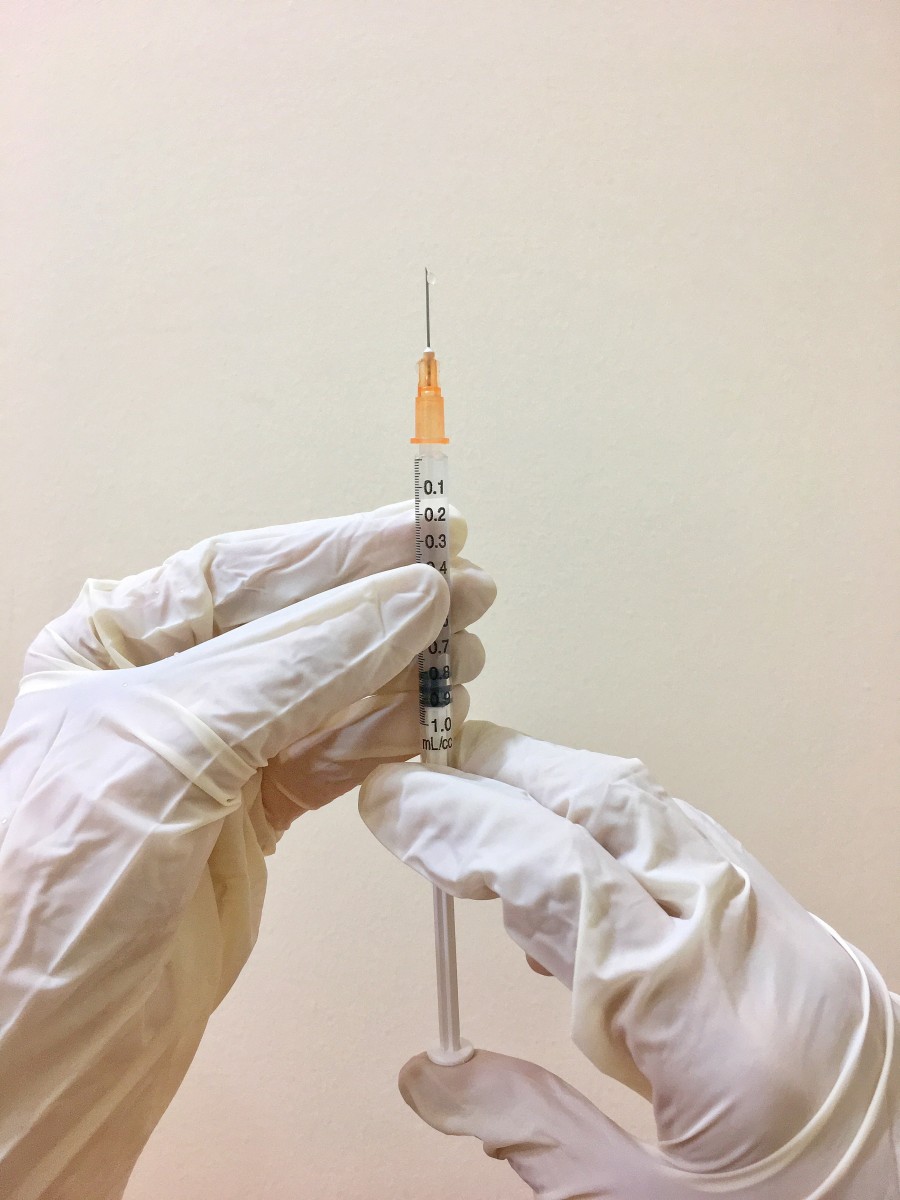On a hazy morning in early August, palliative care nurse Kelly Graham stood on the corner of Biltmore Avenue within a mile of downtown Asheville to participate in a national day of action organized by National Nurses United. She hoped to join the union in just six weeks.
Behind her stood the sprawling campus of Asheville’s Mission Hospital, where she had experienced decreases in staffing, and therefore patient care, since she started working there in March 2019. Beside her stood approximately 80 fellow pro-union nurses, flanked by local politicians. Before her, members of the community drove by on the heavily-trafficked road, honking and yelling words of support through open windows.
For Graham, that morning’s action demonstrated what was possible if the nurses and the community came together to demand change.
“This is my hospital,” she said. “My mom was born at the hospital across the road that is now part of Mission. I was born at Mission, and my son was [too].”
The power of that collective voice became clear on September 16, when Mission Hospital nurses said yes to unionization in a landmark victory that captured 70 percent of the affirmative vote. The win was the first union victory at a private hospital in North Carolina labor history. It was also the largest victory at a non-union hospital in the South since 1975, with approximately 1800 RNs now represented by NNU, the nation’s largest nurses’ union.
“It was the only way for us to really have a voice,” Graham said, referring not just to the nurses but to the community on the receiving end of their care. “If we all joined our voices together, we were more likely to get what we needed.”
Join ‘The Book Club’: Why and How Mission’s Nurses Considered Unionizing
When Donna Langlois began working on Mission Hospital’s general surgery unit in 2015, she had time for her patients’ physical and emotional needs.
“If they just wanted to sit and cry with us, we could hold their hands, could comfort them,” she said. Three years later, however, at-will terminations and voluntary departures were gutting staff as for-profit healthcare conglomerate HCA Healthcare finalized its $1.5 billion purchase of nonprofit Mission Health, which owned six hospitals – of which Asheville’s Mission Hospital is the flagship – and hundreds of medical practices across Western North Carolina.
After the buyout, “if you had a chance to run in and give [patients] their meds and listen to them with a stethoscope without being interrupted, you were lucky,” Langlois said, who now works in oncology.
It was her husband who suggested she contact a union. A representative at NNU, which already represents 10,000 nurses at 19 other HCA hospitals across the country, advised Langlois to pull a couple of nurses aside and quietly gauge their thoughts on unionization. The response was overwhelmingly positive, Langlois said. With a few brief conversations in the break room, the drive to unionize had begun.
For about a year, word spread clandestinely across the hospital, with floating nurses playing a pivotal role as they moved between units to plug staffing gaps. “We would just mention it in passing whenever we had a chance,” Langlois remembers. “We decided to call it ‘the book club.’” In phone calls after work and small group meetings at local restaurants, the nurses gradually built a hospital-wide network of dedicated union advocates.
Yelena Chernous, a cardiac bedside RN with experience working at an NNU hospital in California, was immediately on board. “[I] saw a whole different world of nursing there,” she said. Still, she knew organizing in the South would be difficult, especially in North Carolina, which had the second-lowest union membership in the country in 2019. “You don’t talk about union[s] in the South,” she said. “A nurses’ union has a stigma of rebellion and rallying and striking.”
Nurses are not the only healthcare professionals suspicious of unions. “Doctors are indoctrinated from the start to believe that unions are unprofessional,” explained Mary Johnson, a pro-union pediatrician in central North Carolina.
Langlois knew unionization would succeed when a doctor from an outlying Mission clinic told her in private, “The physicians back you 100%.”
Community Support in the Face of Intimidation and False Information
From the beginning, HCA opposed unionization. “We believe a labor union comes between us [and our colleagues] and limits our ability to have trusting, collaborative relationships with our staff. We believe we can better accomplish our mission to care for and improve human life when we have direct open lines of communication,” Mission Health spokesperson Nancy Lindell said.
In late spring, the company held “Know the Facts” meetings for managers and supervisors as often as twice a day, four days a week across the hospital’s campus. They also distributed information with what Graham said were inflated estimates of monthly and yearly dues.
“Management painted the union as this outside agency that [would] come in and tell us what we’re going to do,” she recalled. As a current member of the union’s Facility Bargaining Committee, Graham still finds herself disabusing nurses of their concerns about when and how much dues are paid. “We don’t pay any dues as members until we win our first contract,” she stressed.
According to Langlois, others used more aggressive anti-union tactics. Although she left in August 2019 due to a shift in her husband’s work situation, fellow organizers kept her abreast of developments – including when some of the most vocal pro-union advocates found color flyers left on their windshields calling them uncaring bullies for organizing. “It was right on the line, I think, of intimidation,” Langlois said.
As the tension between the nurses and the hospital system’s ownership intensified, community support became vital. Asheville Mayor Esther Manheimer and Buncombe County Commission Chair Brownie Newman vocally supported unionization. More meaningful for Chernous, however, were the patients and family members who expressed support on Facebook or made and displayed “We ♡ Mission Nurses” magnets and yard signs. “I haven’t heard of other hospitals that have had this kind of support from where they live,” she said.
NNU Southern Region and HCA Division Director Bradley Van Waus was more blunt when explaining the depth of support. “The community knew that something was wrong at that hospital,” he said.
While the company successfully delayed the vote to unionize twice in mid-March and early April, ballots were finally mailed on August 18 for the September 16 count by the National Labor Relations Board (NLRB). While Chernous says she barely slept that night for nerves, Langlois and Graham felt fairly confident they would win. “The landslide made it all the sweeter,” Graham said.
The Future Starts Now: Bargaining Priorities and Pre-Negotiation Victories
Contract negotiations begin on January 14 with five key bargaining goals: staffing, compensation, health and safety, workplace protections and renewed focus on community care. A 2018 contract negotiated by NNU nurses with HCA hospitals in five other at-will and/or right-to-work states offers a glimpse into specific provisions that could appear in the finalized Mission contract, including more critical care staff, equitable wages that reflect experience, continued insurance coverage for nurses and their families, and workplace violence protection. All of these issues, in some way or another, came up in conversation with the nurses who spoke to 100 Days in Appalachia.
Safe staffing tops the list, because Chernous, one of the 11 members of the union’s bargaining team, said patient safety starts there.
“When you start overstepping [staffing ratios], you can’t watch [patients] as closely – you start missing things,” Chernous explained. The first step for the union in negotiations will be to ensure enforcement of HCA’s existing staffing guidelines, but additional factors like guaranteed meal and rest breaks are also crucial to Chernous and her bargaining team members. Those, they say, will enable nurses to be at their best when caring for patients.
Lindell emphasized that HCA is “aggressively recruiting for RNs and nurse support positions.” “We are in the midst of an RN recruitment campaign to add 200 nurses in 90 days and have already reached our goal with a week to go,” she said.
However, it’s not just the number of nurses that matter but the quality. Langlois remembers nurses with 20 or 30 years of experience fired at will in 2018 and 2019 who were then told they could reapply for their old jobs or similar ones. “Why would you just fire your most seasoned nurses?” she asked. Her best guess? “Money.” Just cause provisions, a cornerstone of many union contracts, can prevent these at-will firings.
Graham also wants to see more equity and transparency around wages. “I was shocked when we did a bargaining survey to find a huge gap between nurses that had the same amount of experience,” she said, citing discrepancies as high as $8 an hour. Some preceptors, experienced nurses who train newer staff, even make less than those they supervise.
While the nurses are looking forward to negotiations starting, they continue to exercise the collective power they cultivated when unionization was little more than whispered conversations in break rooms and meetings at Panera. Recently, nurses on the Post-Anesthesia Care Unit (PACU) wore stickers to support a colleague unfairly disciplined for speaking out about sexual harassment. As a result, the discipline was rescinded. Similarly, the nurses at Copestone, Mission Hospital’s mental health division, successfully petitioned the administration to put on hold the decision to combine the adolescent and children units.
Solidarity even stretches beyond individual units. In early December, nurses from multiple units visited Mission Hospital CEO Chad Patrick’s office to support Copestone nurses, this time in a protest against workplace violence.
“We helped nurses build a network of their colleagues where they can amplify their voices around the hospital, rely on each other for mutual aid and protection,” Van Waus said.
Before the HCA buyout, Mission Hospital was a regionally-known community hospital known for its excellent, compassionate care. That’s why the fifth and final bargaining point, which focuses on repairing a strained relationship with the community, has particular resonance for Graham, Chernous, Langlois, and the other nurses who made unionization happen.
“I want people to remain focused and stay positive,” Graham said. “Don’t lose hope, because this is our opportunity to take our hospital back.”
Sara Murphy is a freelance writer living in the mountains outside of Asheville, NC. Her work has appeared in Folks and Supermajority News.
Editor’s note: This story has been updated to correct the department in which Donna Langlois worked when she began at Mission Health.



